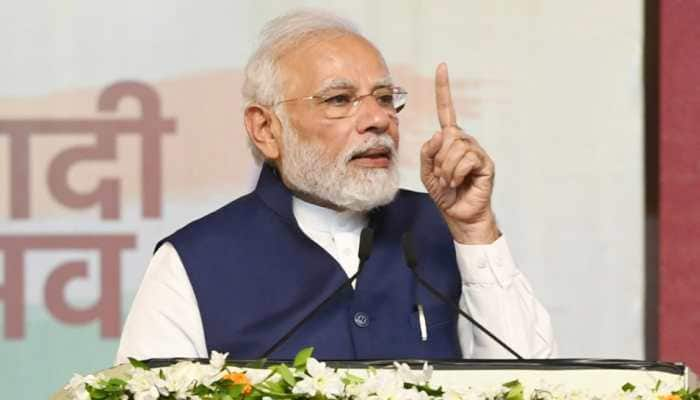Live Classes

The Centre plans to introduce a new scheme – PM PRANAM, which stands for PM Promotion of Alternate Nutrients for Agriculture Management Yojana. What is this scheme, and why is it being introduced now?
In order to reduce the use of chemical fertilisers by incentivising states, the Union government plans to introduce a new scheme – PM PRANAM, which stands for PM Promotion of Alternate Nutrients for Agriculture Management Yojana.
The proposed scheme intends to reduce the subsidy burden on chemical fertilisers, which is expected to increase to Rs 2.25 lakh crore in 2022-2023, which is 39% higher than the previous year’s figure of Rs 1.62 lakh crore.
What is the PM PRANAM scheme?
A source told The Indian Express that the scheme will not have a separate budget and will be financed by the “savings of existing fertiliser subsidy” under schemes run by the Department of fertilisers.
Further, 50% subsidy savings will be passed on as a grant to the state that saves the money, sources said, and that 70% of the grant provided under the scheme can be used for asset creation related to technological adoption of alternate fertilisers and alternate fertiliser production units at village, block and district levels.
The remaining 30% grant money can be used for incentivising farmers, panchayats, farmer producer organisations and self-help groups that are involved in the reduction of fertiliser use and awareness generation.
A source said that the government will compare a state’s increase or reduction in urea in a year, to its average consumption of urea during the last three years. Data available on a fertiliser Ministry dashboard, iFMS (Integrated fertilisers Management System), will be used for this purpose, the source said.
How much fertiliser does India require?
The kharif season (June-October) is critical for India’s food security, accounting for nearly half the year’s production of foodgrains, one-third of pulses and approximately two-thirds of oilseeds. A sizable amount of fertiliser is required for this season.
The Department of Agriculture and Farmers Welfare assesses the requirement of fertilisers each year before the start of the cropping season, and informs the Ministry of Chemical and fertilisers to ensure the supply.
The amount of fertiliser required varies each month according to demand, which is based on the time of crop sowing, which also varies from region to region. For example, the demand for urea peaks during June-August period, but is relatively low in March and April, and the government uses these two months to prepare for an adequate amount of fertiliser for the kharif season.
Why is the scheme being introduced?
Due to increased demand for fertiliser in the country over the past 5 years, the overall expenditure by the government on subsidy has also increased.
The total requirement of four fertilisers — Urea, DAP (Di-ammonium Phosphate), MOP (Muriate of potash), NPKS (Nitrogen, Phosphorus and Potassium) — increased by 21% between 2017-2018 and 2021-2022, from 528.86 lakh metric tonnes (LMT) to 640.27 LMT, according to a written reply given to Lok Sabha by Bhagwanth Khuba, the Union Minister of State for Chemicals and fertilisers.
In light of the increased demand, the government has also been increasing the subsidies it provides for chemical fertilisers. In the Union Budget 2021-22, the government had budgeted an amount of Rs 79,530 crore, which increased to Rs 1.40 lakh crore in the revised estimates (RE). However, the final figure of fertiliser subsidy touched Rs 1.62 lakh crore in 2021-22.
In the current financial year (2022-23), the government has allocated Rs 1.05 lakh crore, but the fertiliser Minister has stated that the fertiliser subsidy figure could cross Rs 2.25 lakh crore during this year.
PM PRANAM, which seeks to reduce the use of chemical fertiliser, will likely reduce the burden on the exchequer. The proposed scheme is also in line with the government’s focus on promoting the balanced use of fertilisers or alternative fertilisers in the last few years.
When will it be introduced?
It is learnt that top officials of the Union Ministry of Chemicals and fertilisers, which raised the idea of PM PRANAM, shared information about the proposed scheme to state government officials during the National Conference on Agriculture for Rabi Campaign, which was held on September 7. The ministry has also sought their suggestions on the features of PM PRANAM, it is learnt.
Sources said the ministry has begun inter-ministerial discussions on the proposed scheme and that its draft will be completed after incorporating the views of the departments concerned.
Paper - 2 (Governance)
Download pdf to Read More